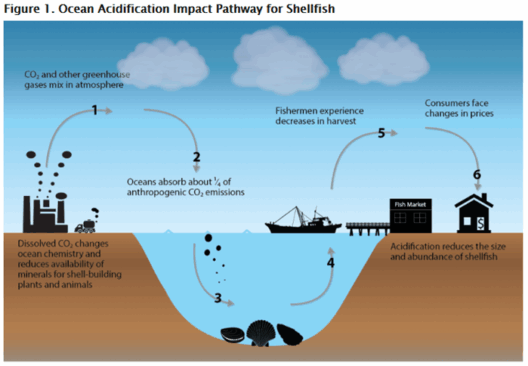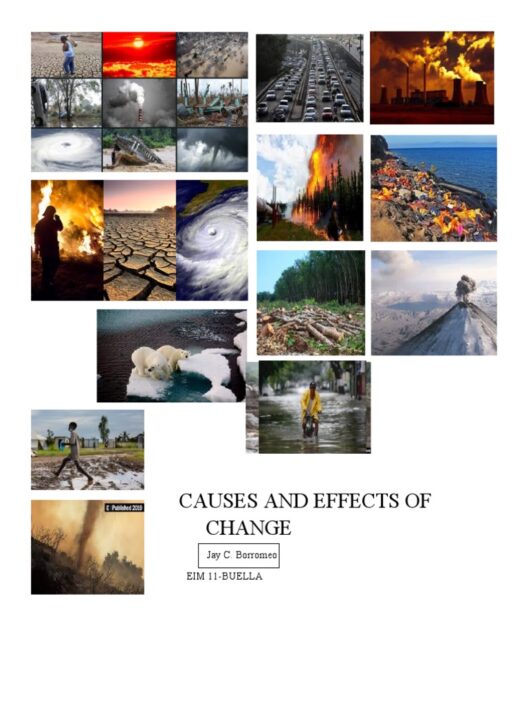Climate change is one of the most pressing challenges facing humanity today. A central player in this environmental conundrum is the realm of chemistry, specifically the intricate chemical reactions that drive global warming. On the surface, one might wonder: how do seemingly mundane chemical processes contribute to such an existential threat? Let us delve into the fundamental chemical mechanisms at work and unravel the interplay between these reactions and our planet’s rising temperatures.
The atmosphere, a delicate equilibrium of gases, is significantly altered by human activities. It is predominantly composed of nitrogen (78%), oxygen (21%), and traces of other gases, including carbon dioxide (0.04%). While naturally occurring, the levels of greenhouse gases, particularly carbon dioxide (CO2), methane (CH4), and nitrous oxide (N2O), have surged to alarming heights due to anthropogenic activities. How does chemistry elucidate the process behind this escalation?
At the heart of global warming lies the greenhouse effect. This phenomenon arises when certain gases trap heat from the sun in the Earth’s atmosphere, preventing it from escaping back into space. To understand this, let’s explore the resonance of carbon dioxide. CO2 is a greenhouse gas that absorbs infrared radiation. When sunlight strikes the Earth, some of the energy is reflected back, and the remainder is absorbed, warming the planet. CO2 molecules then re-radiate this energy in all directions, with a portion directed back toward the Earth, thus amplifying the warmth. This chemical interaction is vital to life as we know it, yet in excessive quantities, it becomes detrimental.
The primary chemical source of excess CO2 is the combustion of fossil fuels—coal, oil, and natural gas—used for energy, transportation, and industrial processes. During combustion, carbon bonds with oxygen to form CO2. The reaction is simple yet effective: C + O2 → CO2, where the release of energy fuels our infrastructure, but paradoxically, it simultaneously feeds the greenhouse effect. Could it be possible that the very fuel enabling our advancement is encoding our undoing in its molecular structure?
Furthermore, another potent greenhouse gas is methane, which is over twenty times more effective than CO2 at trapping heat over a 100-year period. Methane has hydrophobic characteristics, often released during the extraction of fossil fuels, landfills, and agricultural practices, especially through enteric fermentation in livestock. The chemical reaction that converts organic material into methane, CH2O + CO2 → CH4 + O2, demonstrates the complexity of biological processes that perpetuate global warming.
Additionally, nitrous oxide contributes to the greenhouse effect, primarily released through agricultural and industrial activities. This gas, with its chemical formula N2O, occurs when nitrogen-based fertilizers break down in soil. The complex reactions that occur, driven by soil microorganisms, produce nitrous oxide, which unfortunately escapes into the atmosphere, exacerbating global warming. The conversion of fertilizer into gas—a chemical transformation key to food production—directly correlates to climate disturbance. As we strive for a sustainable future, what could be the consequences of over-reliance on these chemical processes?
In recent years, scientists have turned their focus to potential solutions involving chemistry. The field of carbon capture and storage (CCS) seeks to mitigate the release of CO2 into the atmosphere. Various chemical reactions can absorb CO2 from power plants, converting it into stable carbonate minerals or storing it underground (a process known as mineralization). One promising reaction involves the use of amines to bind with CO2, forming carbamate, which allows for efficient removal before it can contribute to warming.
In addition, alternative energy sources such as solar, wind, and biofuels also represent a shift towards chemistry that minimizes greenhouse gas emissions. These energy transformations rely on various chemical reactions that harness nature’s energy while curbing harmful emissions. For instance, photosynthesis (6CO2 + 6H2O → C6H12O6 + 6O2) is a natural process that underscores how energy can be captured and transformed without adding to the atmospheric burden.
Yet, while chemical reactions can illuminate the mechanics of global warming, they also present a dichotomy—can we balance progress with preservation? Could there be an innovative way to harness chemistry in our favor? Perhaps this challenge unveils a unique opportunity: the quest for sustainable chemistry. By exploring biodegradable materials, green solvents, and catalytic processes that require less energy, we may unveil pathways towards a more environmentally-friendly future.
In conclusion, chemistry serves as both the lens through which we can understand the causes of global warming and a key to devising solutions. The chemical reactions driving climate change underscore a complex relationship between human behavior and environmental impact. Progress and preservation do not have to be at odds; through innovative scientific exploration, a sustainable existence may be within reach. As we grapple with the effects of climate change, it is imperative to ask ourselves: how can chemistry facilitate a harmonious coexistence with our planet, ensuring it remains a habitable sanctuary for generations to come?








